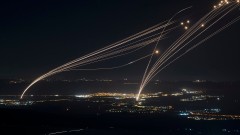The Israel-Iran conflict has escalated with a series of rocket attacks and airstrikes. Israel conducted massive strikes on Iranian nuclear facilities, including the uranium enrichment plant in Natanz, aiming to reduce the Iranian nuclear threat. Iran retaliated by launching ballistic missiles at Israeli cities, resulting in one woman killed and multiple injuries. Both sides reported casualties and material damage. The situation has raised concerns about the conflict spreading across the Middle East, while international actors call for de-escalation and diplomatic solutions. Israeli Prime Minister Netanyahu stated that attacks will continue until the threat is removed, while Iran threatens a stronger response. This conflict has led to the closure of Iranian airspace and disruptions in international traffic, as well as a rise in oil prices on global markets.
Political Perspectives:
Left: Left-leaning outlets emphasize the humanitarian impact of the conflict, highlighting civilian casualties and the risk of wider regional war. They often call for diplomatic solutions and criticize military escalations by both Israel and Iran. The narrative may include concerns about the impact on ordinary people and the destabilization of the Middle East.
Center: Centrist sources report the facts of the conflict, focusing on the military actions taken by both sides, the strategic objectives such as Israel targeting Iranian nuclear facilities, and Iran’s retaliatory rocket attacks. They highlight international calls for de-escalation and the geopolitical implications without strong bias, presenting statements from both Israeli and Iranian officials.
Right: Right-leaning media emphasize Israel’s right to defend itself against existential threats posed by Iran’s nuclear program. They highlight the precision and necessity of Israeli military actions and often portray Iran as the aggressor. The narrative supports strong military responses and stresses the threat Iran poses to Israel and regional stability.




